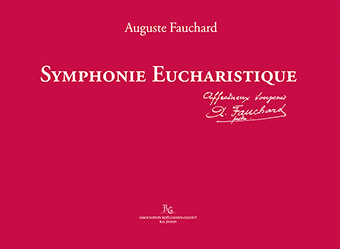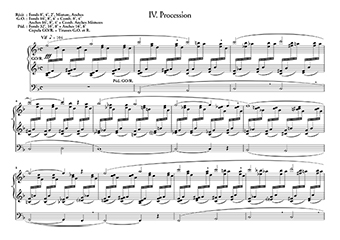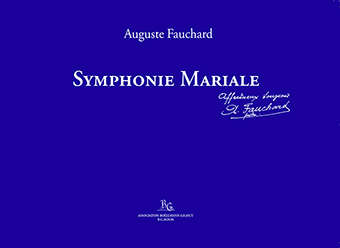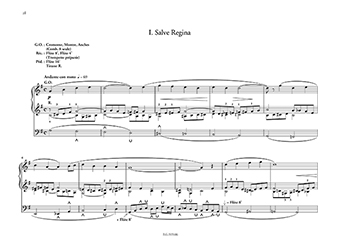Composer's Catalogue
Auguste FAUCHARD
(1881-1957)
Auguste FAUCHARD
Symphonie Eucharistique
Ref. B.G.2010.05
Technical info
A volume 225 x 310 (landscape format). 98-page. Preface in French and English.
Publisher
Association Boëllmann-Gigout
Contents
1. Invitatoire; 2. Sacrifice; 3. Communion; 4. Procession.
Summary
With the Eucharistic Symphony, canon Fauchard clearly transcends his models Vierne, Widor, Dupré; the elegance of the writing, often suave, sometimes sensual, the refinement of the timbres, make this ample monument a masterpiece of organ literature of the 20th century. This vast symphonic fresco delivers three musical meditations on the Eucharist: Lauda Sion, Pange lingua et Adoro te.
Level
Difficult.
Auguste FAUCHARD
Symphonie Mariale
Ref. B.G.2020.06
Technical info
A volume 225 x 310 (landscape format). 88-page. Preface in French and English.
Publisher
Association Boëllmann-Gigout
Summary
Auguste Fauchard's 3rd and 4th Symphonies are among the few instances of a cyclical liturgical symphony built entirely on Gregorian themes. The priest-composer conceived his two major works to illustrate a liturgical context and at the very least to appear in the “spiritual” concert. The composer's foreword classifies the Symphonie Mariale as “programme music”, and the second movement of the work, with its masterly fugue, is similar to the Fugue sur le nom d'Alain that Maurice Duruflé wrote later. It was composed in two and a half months and completed on December 4th, 1941.
It is based on three motets or hymns to the Blessed Virgin: Salve Regina (antiphon of the 5th mode), the hymn Ave Maris Stella, a tune from the office of Pontmain (sanctuary of Our Lady of Pontmain, Mayenne), and O Sanctissima.
It consists of four movements:
I – Andante con moto: Salve Regina (5th tone).
II – Chorale and Fugue: Ave Maris Stella (Tune of Pontmain).
III – Interlude: O Sanctissima.
IV – Symphonic Piece: Salve Regina, Ave Maris Stella, O Sanctissima.
Level
Difficult.





